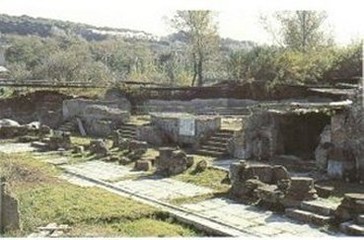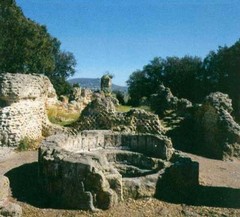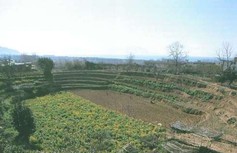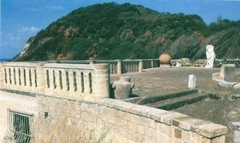Intro - Campi Flegrei on-line
Menu principale:
Intro
 Called Kymé by the Greeks and Cuma by the Romans, Cuma was founded in the second half of the VIII century B.C. by settlers from the island of Euboea. According to a legend, they were guided across the sea by a dove sent by Apollo. Cuma was the first polis of Magna Graecia.
Called Kymé by the Greeks and Cuma by the Romans, Cuma was founded in the second half of the VIII century B.C. by settlers from the island of Euboea. According to a legend, they were guided across the sea by a dove sent by Apollo. Cuma was the first polis of Magna Graecia.
This prosperous town had ports in Miseno and Dicearchia, in addition to the old one at Cuma.
From the VI century B.C. onwards, Cuma had to face the threat of invasions from the Etruscans and their allies were defeated in a memorable land battle, and this date in acknowledged to be the first certain date in Italian history.
In 474 B.C. Cuma was attacked by the Etruscans again, Cuma had to ask Geryon of Syracuse to come to their aid.
His powerful fleet and the one from Cuma managed to defeat the Punic and Etruscan navy. Yet in 421 the Samnites conquered the fortess but they did not dare to destroy the old buildings.
Romans offered Cuma the opportunity to regain her importance politically and geographically.
After becoming a municipality in 180 B.C. the town was allowed to use Latin in official documents.
Cuma area was used to station the armed forces and the ships of Octavianus and Agrippa were at anchor here, in the Portus Julius.
During the Empire Cuma was not affected by development like Puteoli, Baia and Miseno. In 536 A.D. the town fell to Belisarius and them to Totila in 524. Then the Lombards, took Cuma.
A few years later it was John II, the duke of Naples, who usurped the power from the Lombards of Capua.
Cuma was very badly damaged in 915 and eventually became a haven for bandts, pirates and rogues.
In 1207 the Neapolitans, led by Goffredo di Montefuscolo, completely destroyed the town.
The first great archeological discoveries were made in 1606 by he Count of Syracusem and then by Minervini, Fiorelli, Ganrici, Pellegrini and Maiuri.


